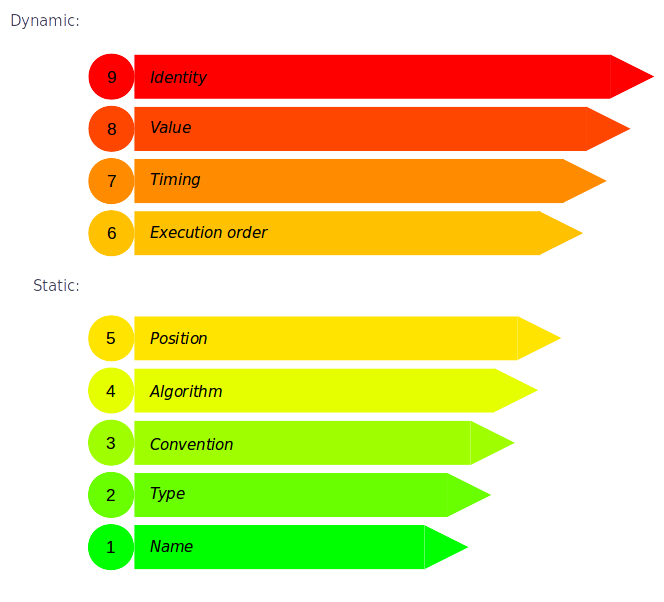Connascence
Contents of this page:
Headline concepts
- There’s a great site here that describes connascence in more detail than I have here, and with lots of examples.
- Good blog post here.
- Connascence is a way of measuring / describing the way in which software elements are coupled.
- There are three connascence metrics: locality, degree and strength (see below).
- Connascence can be either dynamic or static (see below)
- There are several types of connascence.
- @KevinRutherford and @JJeffries1 have a good refactoring video from XP Manchester which goes over the usage of connascence.
Connascence metrics
There are three connascence metrics: locality, degree, strength. They are listed below. By considering these, you can make decisions about whether you are happy with your level of connascence or not. For instance, if the degree is low, you will probably be happier than if multiple entities are affected. If connascence is strong but local, this is more acceptable than strong and far apart.
Locality
How close two entities are to each other.
See below for an explanation of why locality and strength should be considered in conjunction with one another.
Degree
The number of entities that are affected.
Strength
The ease with which the type of coupling can be refactored.
See below for an explanation of why locality and strength shlud be considered in conjunction with one another.
This useful diagram (by @KevinRutherford, via DZone) lists the types of connascence in strength order - where red is strong and green is weak (“convention” equates to “meaning”, and see below for dynamic/static distinction):

Locality and strength
Locality and strength are worth considering in conjunction with one another because “many of the stronger forms of connascence that can be devastating to the readability and maintainability of a codebase when they appear far apart are innocuous when close together. … Stronger connascences are more acceptible within a module. Weaker connascences should be used between entities that are far apart (in separate modules or even codebases).” (from connascence.io)
Dynamic vs Static
“static connascences can be determined simply by examining the source code. Dynamic connascences require knowledge of run-time behavior, and thus are harder to reason about.” (from here)
Types of connascence
All the types are listed in more detail, with examples, at connascence.io.
The lists below are lifted from this DZone blog post).
Static Connascence
There are several types of static connascence
- Connascence of Name (CoN): this is when multiple components must agree on the name of an entity.
- Connascence of Type (CoT): this is when multiple components must agree on the type of an entity.
- Connascence of Meaning (CoM) or - Connascence of Convention (CoC): this is when multiple components must agree on the meaning of specific values.
- Connascence of Position (CoP): this occurs when multiple components must agree on the order of values.
- Connascence of Algorithm (CoA): this is when multiple components must agree on a particular algorithm.
Dynamic Connascence
There are also several types of dynamic connascence:
- Connascence of Execution (order) (CoE): this is when the order of execution of multiple components is important.
- Connascence of Timing (CoTm): this occurs when the timing of the execution of multiple components is important.
- Connascence of Value (CoV): this occurs when there are constraints on the possible values some shared elements can take. It’s usually related to invariants.
- Connascence of Identity (CoI): this happens when multiple components must reference the entity.